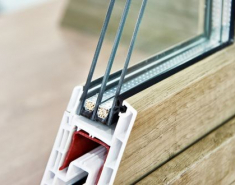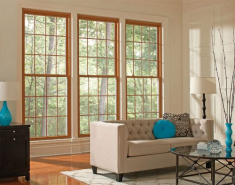What to know about insuring a historic home
Whether your historic home is new to you or has been in the family for generations, an essential element of taking care of the property is adequate insurance.
“Insuring a historic home can be very different from insuring a newer home,” said Dawn Meadows, an insurance adviser with Clarke & Sampson in Alexandria, Va. “The main consideration is that it can cost as much as 50 percent more to rebuild a historic home compared to a home of similar size constructed with modern materials.”
Most owners of historic homes view themselves as “stewards of history,” and it is important to them that their insurance allows them to repair any damage with historically accurate or at least similar materials, said Kate MacDougall, a historic home specialist and senior risk consultant with Chubb Personal Risk Services in Phoenix, Md.
Not every insurance provider is willing to risk insuring a historic home, said Kevin Sullivan, a client executive with National Trust Insurance Services, a subsidiary of the National Trust for Historic Preservation in Baltimore.
“If you ask 10 insurance carriers, ‘Who wants to insure a Victorian home built in 1910?’ maybe two would say okay,” Sullivan said. “But one would charge a lot because it’s historic, and one would charge less because that company would recognize that the home is built with superior quality that has stood the test of time.”
Premiums for insuring a historic home are typically about 20 percent higher than for a standard home, said Shannon O’Hare, a client manager with National Trust Insurance Services in Baltimore.
The reasons historic homes cost more to insure come down to two main issues: materials and building codes. Historic homes often were constructed with materials that aren’t commonly used today. Insurers have to factor in the expense of replicating those features of the house if there’s a flood or fire.
“Replacing plaster walls costs more than replacing drywall,” Meadows said. “The type of lumber and moldings in historic homes is usually more expensive. It costs more to replace solid brass fixtures than brass-plate fixtures and to replace doors with solid-wood rather than hollow doors.”
Because building codes change frequently, chances are a historic home won’t be up to today’s standards.
“Some features can be grandfathered in and won’t need to be brought up to code, but others may have to be upgraded,” Meadows said, such as widening a staircase or changing the handrails.
Unique features in a historic home sometimes require a separate insurance policy, MacDougall said.
“For example, if the home has unique stained-glass windows by Tiffany or an antique chandelier or a marble mantelpiece designed by an artist, you may need to add coverage as you would for fine art,” she said. “A separate rider on your policy for these unique features provides special coverage for breakage or repair of those items as well as replacement costs.”
Designating a house as historic could also affect premiums.
“Sometimes designations include specific requirements, such as that all windows must be replaced with wood windows that replicate the style of the original windows,” Meadows said. Those specifications could raise the cost of repairing or replacing a home, which will be factored into the premiums.
Insurance companies unfamiliar with older properties may also prefer to avoid homes with a historic designation.
“Some of our customers come to us when their insurance has been canceled by their insurance company because they found out that the property is designated as part of a historic district or on a local, state or national list of historic properties,” Sullivan said.
An insurance inspection can provide helpful information to homeowners, Meadows said. An insurance inspection focuses on the materials and condition of the house to estimate future repair and replacement costs. It is different from a home inspection, which evaluates the property’s condition for the buyer.
Source: https://wapo.st/2OGLeid









